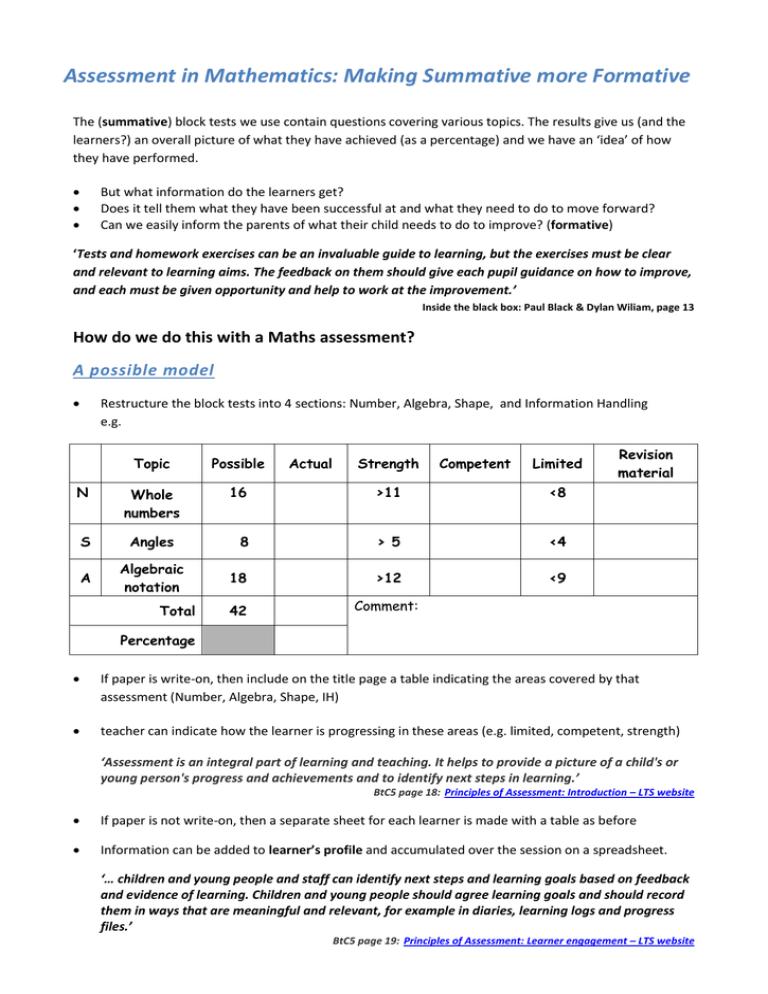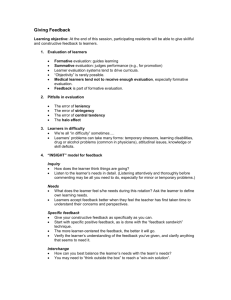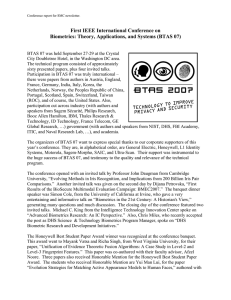Assessment in Mathematics: Making Summative more Formative
advertisement

Assessment in Mathematics: Making Summative more Formative The (summative) block tests we use contain questions covering various topics. The results give us (and the learners?) an overall picture of what they have achieved (as a percentage) and we have an ‘idea’ of how they have performed. But what information do the learners get? Does it tell them what they have been successful at and what they need to do to move forward? Can we easily inform the parents of what their child needs to do to improve? (formative) ‘Tests and homework exercises can be an invaluable guide to learning, but the exercises must be clear and relevant to learning aims. The feedback on them should give each pupil guidance on how to improve, and each must be given opportunity and help to work at the improvement.’ Inside the black box: Paul Black & Dylan Wiliam, page 13 How do we do this with a Maths assessment? A possible model Restructure the block tests into 4 sections: Number, Algebra, Shape, and Information Handling e.g. Topic Possible N Whole numbers 16 >11 <8 S Angles 8 > 5 <4 A Algebraic notation 18 >12 <9 42 Comment: Total Actual Strength Competent Limited Revision material Percentage If paper is write-on, then include on the title page a table indicating the areas covered by that assessment (Number, Algebra, Shape, IH) teacher can indicate how the learner is progressing in these areas (e.g. limited, competent, strength) ‘Assessment is an integral part of learning and teaching. It helps to provide a picture of a child's or young person's progress and achievements and to identify next steps in learning.’ BtC5 page 18: Principles of Assessment: Introduction – LTS website If paper is not write-on, then a separate sheet for each learner is made with a table as before Information can be added to learner’s profile and accumulated over the session on a spreadsheet. ‘… children and young people and staff can identify next steps and learning goals based on feedback and evidence of learning. Children and young people should agree learning goals and should record them in ways that are meaningful and relevant, for example in diaries, learning logs and progress files.’ BtC5 page 19: Principles of Assessment: Learner engagement – LTS website This leads to it being more formative for the learner by indicating strengths and next steps feedback can be specifically targeted to each individual’s needs as a result ‘Learners need timely, accurate feedback about what they have learned and about how well and how much they have learned. This helps them to move forward in their learning and to identify what they need to do next and to decide who can help them build up their knowledge, understanding and skills.’ BtC5 page 18: Principles of Assessment: Supporting learning – LTS website revision material directed to individuals more formative for the staff as it indicates progress in each of the areas covered by the assessment rather than an overall score highlights areas of the course that need to be addressed these issues can then be incorporated into future planning e.g. in period starters, areas that need to be approached differently, misconceptions, revisited, etc. and then these could be put into next assessment to check for improvements feedback from teachers similar to SQA markers’ feedback can assist with moderation each assessable area can be recorded and collated for future evidence reporting to parents is made easier with this information being at hand. ‘Assessment information should be shared and discussed with the learner, parents, other staff as appropriate, and partners involved in supporting learning. All can contribute at appropriate times to setting targets for learning and ensuring appropriate support for each child and young person.’ BtC5 page 20: Principles of Assessment: Ensuring appropriate support– LTS website




